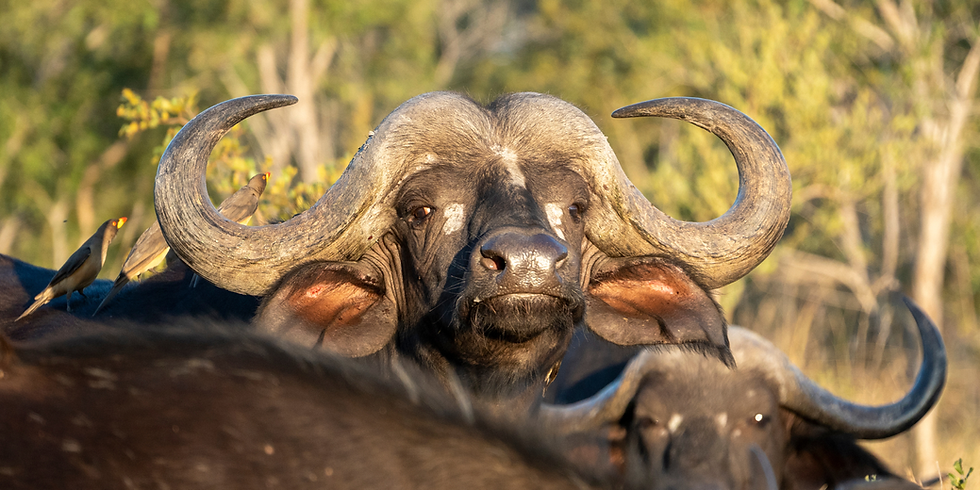Why zebras have stripes: Uncovering the secrets behind their iconic patterns
- Bushwise Student

- May 12
- 3 min read
This blog was written by Maurits Van Eeden, a Bushwise Professional Safari Guide student. Each student takes a turn as camp manager, and writing a blog is part of the experience.
There’s something undeniably iconic about zebras. Maybe it’s their bold black-and-white stripes or the way their stripes are instantly recognisable, no matter where in the world you are. You’ll spot their markings on clothing, art, and even branding, but what fascinates me is the question behind it all – why do zebras have stripes?

In Africa, there are three different species of zebra: the Grévy’s zebra, the mountain zebra, and the plains zebra, each having a distinctive look. Grévy’s zebras are the most finely striped and have large, rounded ears and a narrower build than the others. Mountain zebras have thick, bold stripes that wrap all the way around their legs. This is one of the easiest ways to tell them apart. And then there’s the plains zebra, the most common species, known for their wider black stripes and the mysterious “shadow stripes” that sit between them. These faint brown stripes don’t appear on every individual, and to this day, no one’s entirely sure what purpose they serve.
So, back to the big question – why do zebras have stripes at all? This question has fascinated scientists for decades, and while no single theory has been universally accepted, several compelling explanations have emerged.

One of the most widely accepted ideas is that stripes help keep biting insects, like tsetse flies and horseflies, at bay. Studies have shown that these insects are less likely to land on striped surfaces, possibly because the bold patterns confuse their vision. Fewer flies mean less irritation, and more importantly, less risk of disease.
Camouflage is another possible explanation. At first, black and white stripes might not seem like the best choice for blending into their environment, but during the low light of dawn or dusk, those contrasting patterns can work in the zebra’s favour. The stripes help disrupt their outline, making it harder for predators to pick out one animal from the herd. And when zebras move together, this “motion dazzle” effect becomes even more effective – a blur of stripes that's tricky to track.

Another theory is around thermoregulation. The idea is that the black and white stripes absorb and reflect heat differently, creating tiny air currents over the zebra’s skin. These currents could help cool the animal down by boosting sweat evaporation. It’s still being studied, but it’s a fascinating possibility.
Of course, there’s much more to zebras than their stripes, and as a field guide, understanding zebras beyond their stripes is just as important. Zebras are bulk grazers, eating a wide variety of grasses rather than being selective. That’s a big advantage in environments where food availability shifts with the seasons. When grass is scarce, they’ll even browse on shrubs. Because of this generalist diet, zebras often move ahead of more selective grazers like wildebeest, essentially prepping the landscape for others.

They’re also highly social animals and are often seen mingling with species like impalas and wildebeest. This isn’t by chance, more animals mean more eyes and ears to detect predators – a clever survival strategy.
The more I learn about zebras, the more fascinating they become. Their unique adaptations, social behaviour, and the ongoing scientific debate around their stripes keep me curious. In many ways, zebras are still a mystery – and that’s exactly what makes them so interesting.
Ready to learn more about nature’s incredible creatures firsthand? Explore our wildlife courses to begin your journey into field guiding.



